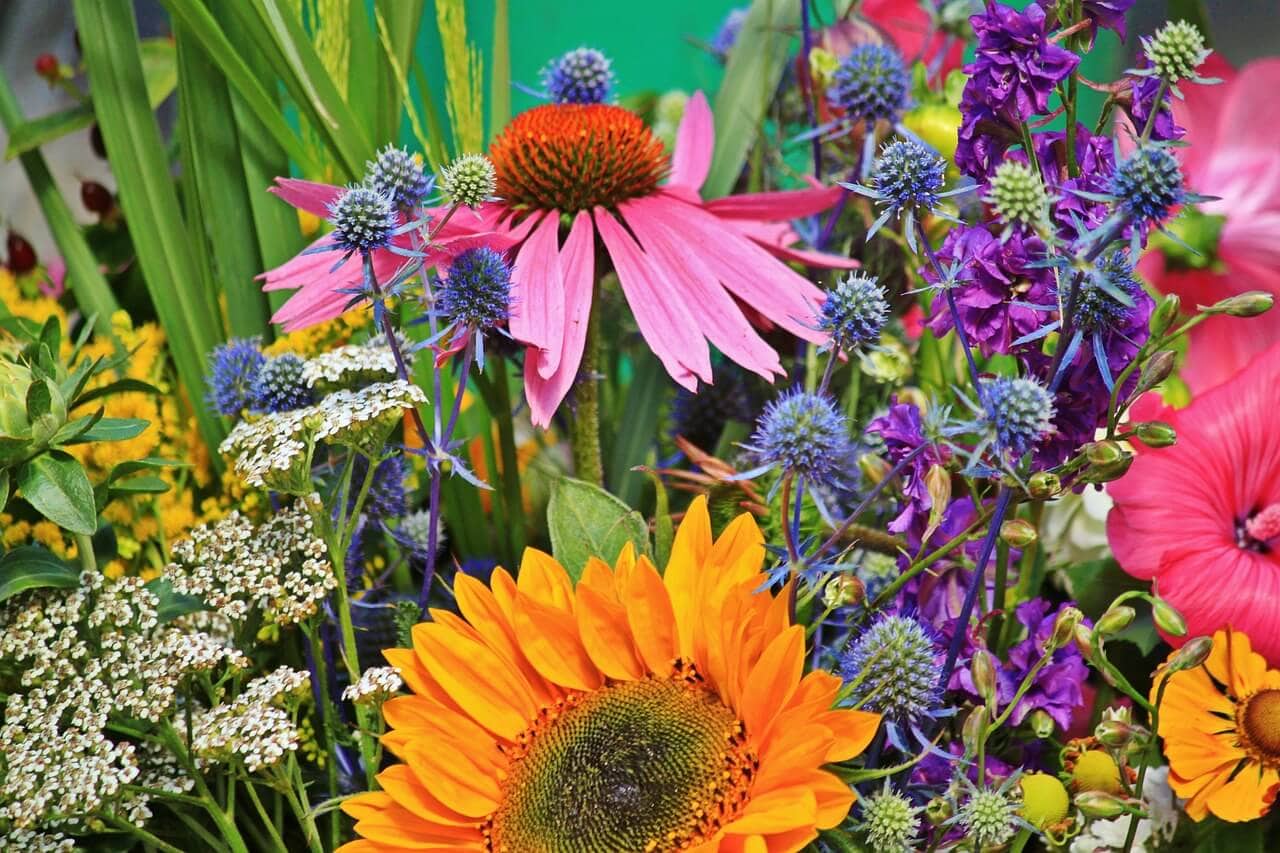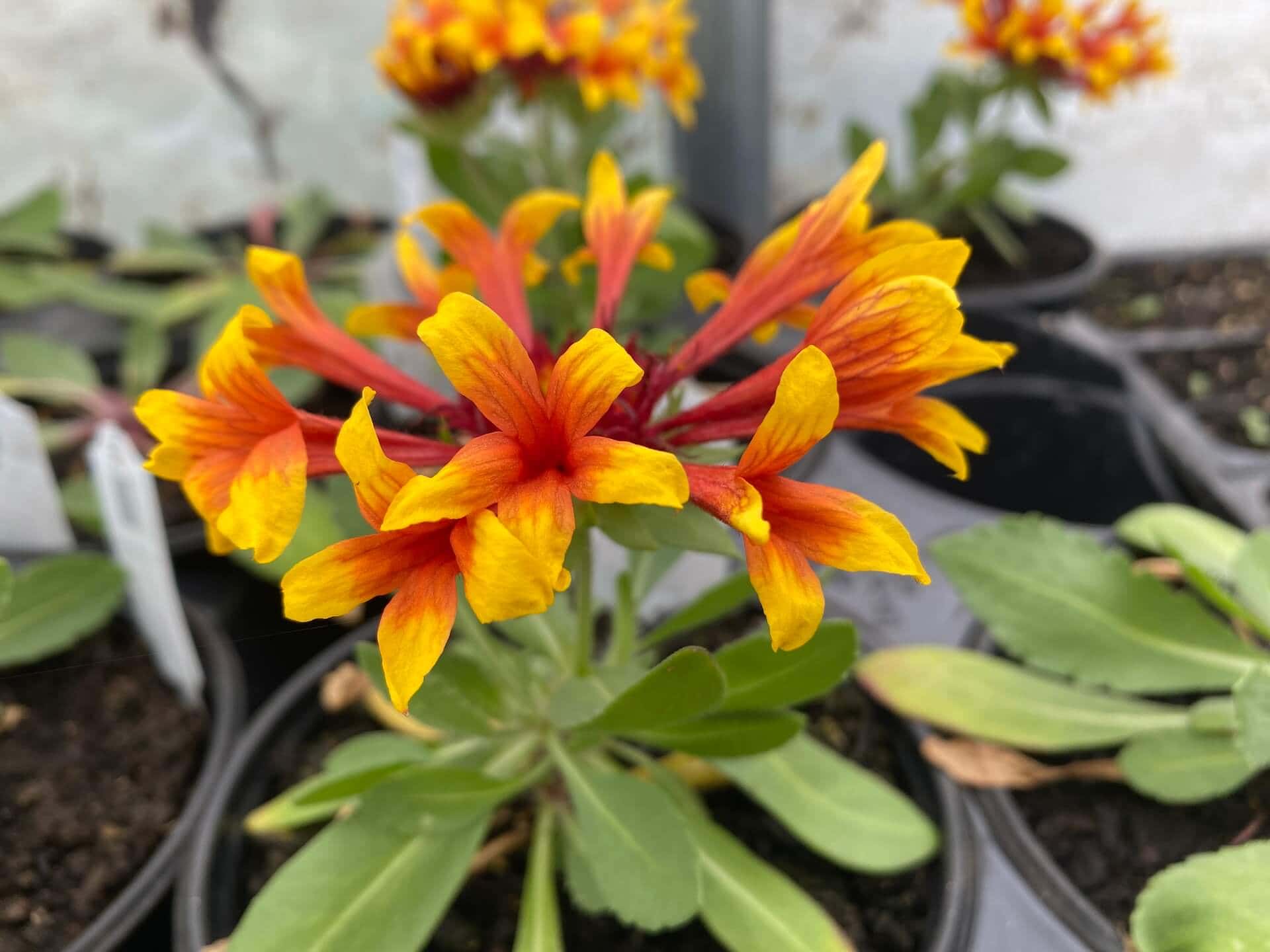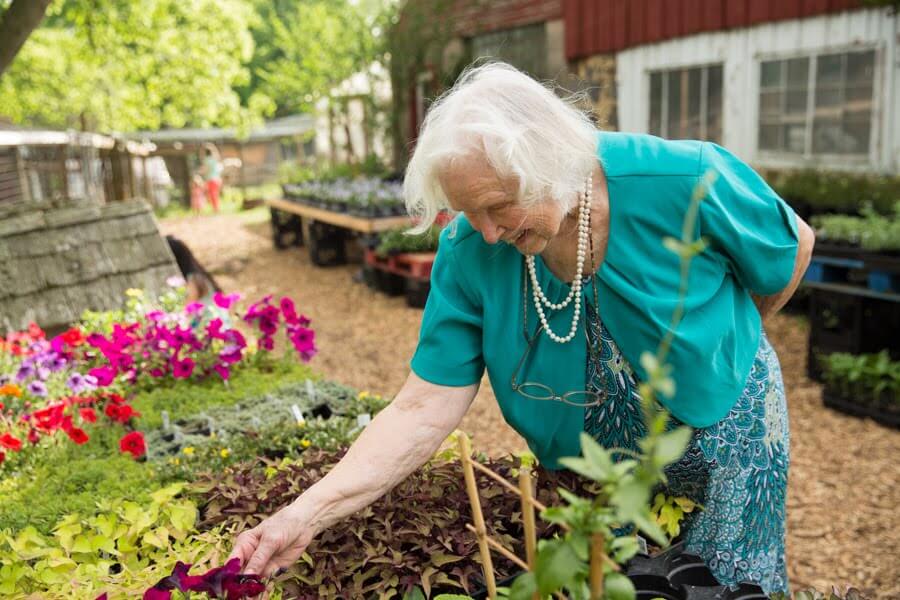This post may contain affiliate links. Probably doesn’t, but it might. It doesn’t cost you anything extra but if you use these links to buy something, we may earn a commission.
Just looking at a flower blossom triggers the production of dopamine in our brains, and we feel better. Flowers with an attractive scent, such as lilacs and peonies, cause our brains to produce serotonin. Serotonin is a mood stabilizer which helps you feel satisfied.
We have improved flow of oxytocin and serotonin to the brain when we see and sniff flowers.
If you give someone flowers, both of you feel more loved. This truly is a case where the giver and the recipient both benefit.
Since flowers help with the production of serotonin, some bedside flowers help you sleep better. Flowers help calm you and stabilize your mood, making it easier to fall asleep.
I have always found it fascinating that my very practical and frugal family has had a spot, always, for flowers in the mix of growing food to feed the family and growing for the extra cash to pay the taxes.

My mother remembers cutting lilacs and selling them at the King Street Farmers Market in the 1930s. We still grow lilacs. The oldest varieties have a wonderful sweet scent. We love the aroma of lilacs as much as our customers do. Everyone has a smile during lilac season.
My mother has told stories of her mother, cutting and arranging flowers, and then selling the bouquets for 35 cents. When my grandmother no longer could tend the flowers, my mother took over that job. Without hesitating. And she loves flowers. We still offer cut flower bouquets (a little more than 35 cents…).
The reason we built our first greenhouse was to be able to start flowers sooner. Every spring, we start a lot of flowers for the cutting garden as well as for sale. And the reality is that flowers have been a very small, but much loved, part of the business.
I have found a love for flowers reaching back to our German ancestors who arrived here in the 1840s. Wilhelm Rotthouse and Louisa Schulmeister arrived separately in the United States, their families meeting in Philadelphia. Wilhelm’s first job in the United States was working at a nursery in Philadelphia.
After William (he anglicized his name soon after arriving) and Louisa married in 1859, they ran a nursery and small farm in Wilmington for a few years. William was known for his flowers and greenhouses. They moved to a small farm on Concord Pike in 1868. The farm was located close to where Aldersgate Church currently is. Sharpley School was built at the corner of the farm. They raised their 4 of their 6 children (two died young), grew vegetables, grains, had a smokehouse, and flowers, as you can see on the hand-drawn map. They sold produce and flowers at the farmers market in Wilmington, at their corner on Sixth and King (opposite the Webster’s stand). Prior to the market stand, they sold flowers at 8th and Orange—the “country” at that time.

Louisa sewed clothes, preserved food, tended the children, taught them music, and had her flower garden close to the house. For inspiration, beauty, joy. Because flowers make us happy, just seeing them close at hand. That the flowers brought in a bit of extra cash was a bonus.
The Rotthouses called their farm “Cherrywood,” because of the abundance of cherry trees planted on the farm. The subtle scent of masses of cherry blossoms in the spring made everyone smile. They sold sweet and tart cherries in bulk to dealers in Philadelphia, as well as selling the cherries in the Wilmington market. They sold vegetables at the market, and flowers.
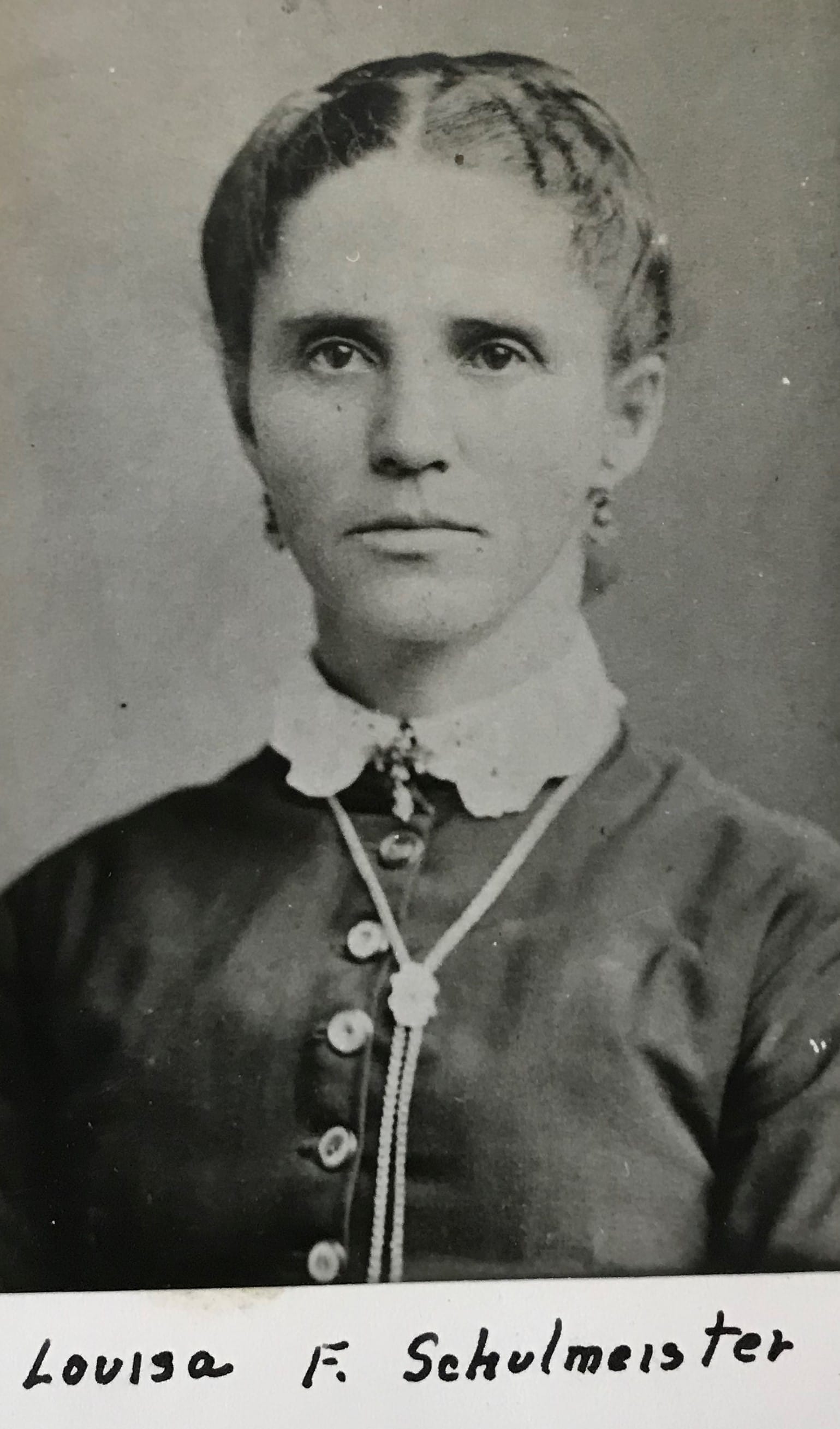

Will Rotthouse, the second oldest of the Rotthouse children, moved to Rehobeth and opened a nursery. Flowers and plants were his life’s work. My grandmother, Rachel Webster, remembered visiting Uncle Will at Rehobeth regularly, and what a wonderful trip that was. All those beautiful flowers plus going to the beach!
Louisa and William’s youngest son, Harry, continued farming at Cherrywood with his wife, Mabel Talley. I remember Harry Rotthouse, my great-grandfather. He tended the flower garden with equal care as with his asparagus patch. He grew gorgeous gladioli. Mabel dried herb flowers and made bouquets for the market. We still grow “glads.”
While William and Louisa were cultivating flowers and vegetables, Mary P. Webster was growing flowers at the farm on Foulk Road, as well as coaxing all the vegetables to grow. She loved flowers! She planted the lilacs that we still love.
Then Mabel and Harry’s daughter, Rachel, continued the love of flowers. She planted peonies as a bride when she married John Webster and came to the farm on Foulk Road, Highland Orchards. The peonies that Rachel planted still grow and bloom each year, and are incredibly fragrant! Those peonies are responsible for a lot of oxytocin and serotonin production still.
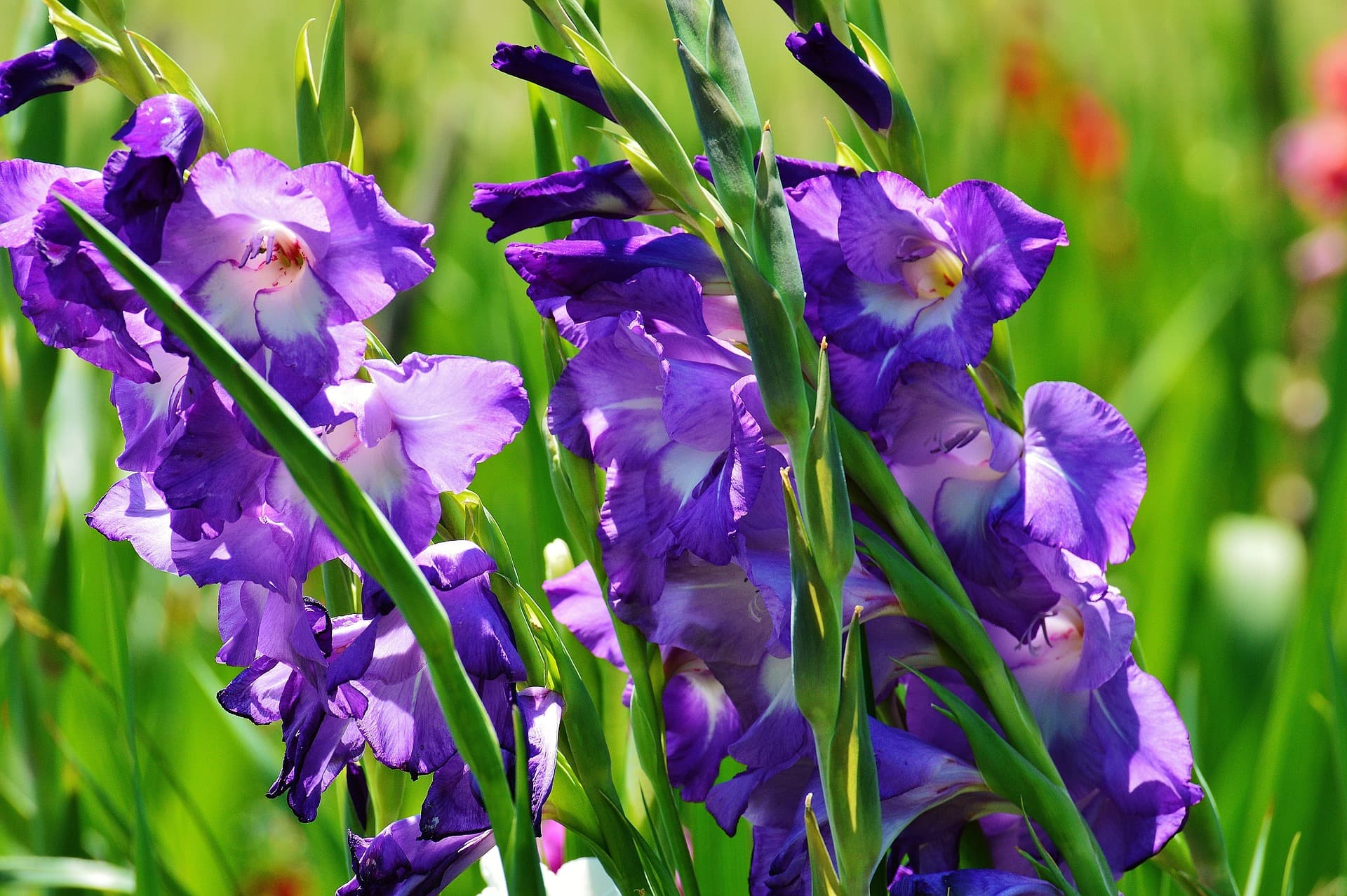
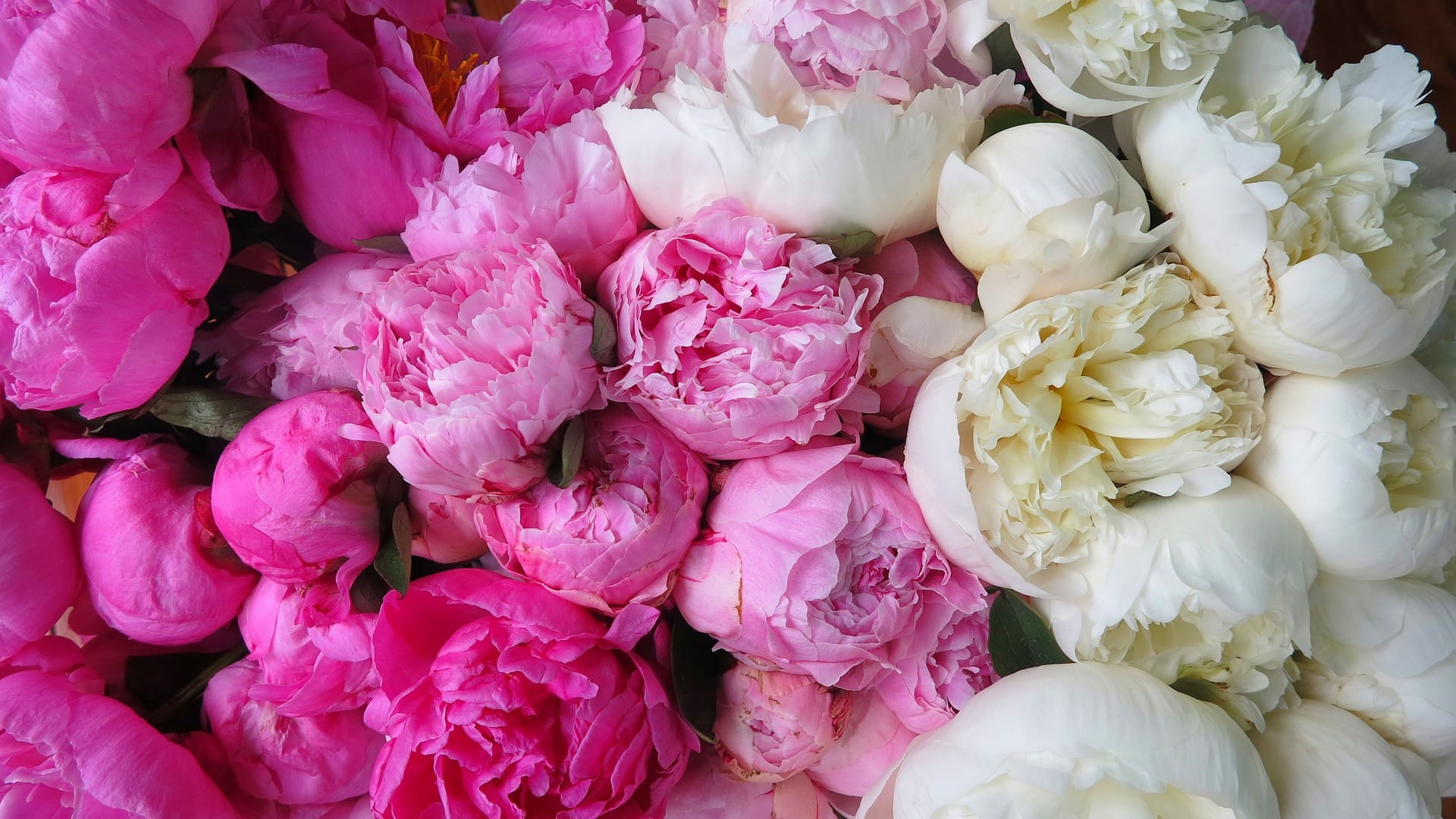
Rachel had thought of being a designer when she was a young girl, but then she married a farmer. She was a musician, an artist, a farmer’s wife, and devoted mother. Rachel could use flowers for artistic expression, and did. Rachel painted the flowers as well as arrange them.
Rachel and John’s daughter, Elaine, planted, cut, and arranged flowers at Highland Orchards. She still enjoys arranging the flowers, and likes to inspect the plantings and give directions about staking, weeding, and cutting.
“Flowers always make people better, happier and more helpful; they are sunshine, food and medicine to the soul.”
Luther Burbank
Flowers are a tangible demonstration of thoughtfulness. The idea of flowers makes us feel happy. Flowers can uplift the mood at any gathering.
This recognition that flowers add to our health, that they make our souls happier, is the legacy that we have been given over the past 190 years. May we always enjoy our flowers!
About Highland Orchards: Completely surrounded by suburbia, our small farm has been growing beyond expectations since 1832 in this location.
Growing a wide variety of fruits, vegetables, and flowers, Highland Orchards provides true “farm fresh” for the community all year. If you want to shake the hand of the farmer who grows for you, here is the farm! With plants in the ground or under cover in tunnels, we grow for every season. A family farm, we have three different generations involved in running the farm right now.
